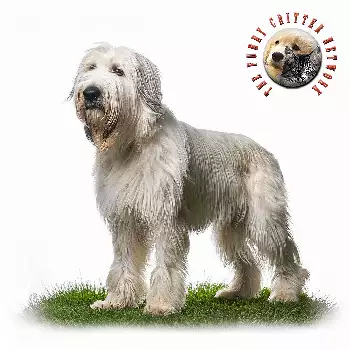Training a Caucasian Owcharka presents unique challenges that demand patience, consistency, and understanding of guardian breed psychology. These dogs were developed to work independently, making decisions without human input about when and how to confront threats to their flock. This independent nature means the breed does not possess the innate desire to please humans that characterizes many sporting and herding breeds. Instead, training must build a relationship of mutual respect where the dog understands that cooperation benefits them and maintains their position within a stable pack structure.
Early training should begin the moment a Caucasian Owcharka puppy arrives home, establishing household rules, routine, and expectations from the start. Consistency proves absolutely crucial, as these intelligent dogs quickly learn what they can and cannot do, and any inconsistency in enforcement teaches them that rules are optional. Basic manners training including sit, down, stay, come, and loose-leash walking should start immediately, using positive reinforcement methods that reward desired behavior rather than punishing mistakes. Food rewards, verbal praise, and play can all motivate Caucasian Owcharka puppies, though their food drive varies between individuals.
Socialization represents the single most important aspect of Caucasian Owcharka puppy development and must be prioritized above all other training goals. The critical socialization window closes around fourteen to sixteen weeks of age, making the first few months after bringing a puppy home absolutely vital for their future temperament and manageability. During this period, puppies should experience positive interactions with diverse people of different ages, sizes, and appearances, always ensuring experiences remain positive and non-threatening. Puppy kindergarten classes provide structured socialization opportunities while teaching basic obedience in a controlled environment.
Exposure to other dogs during the socialization period requires careful management, as Caucasian Owcharkas can develop dog-dog aggression if they have negative experiences or lack proper social learning. Interactions should occur with friendly, stable adult dogs who will teach appropriate social behavior without being aggressive or overly rough. Many experienced breeders recommend avoiding dog parks entirely with this breed, as the uncontrolled environment and unpredictable dogs create too much risk of negative encounters that could trigger lifelong aggression issues. Instead, arranged play sessions with known friendly dogs in controlled environments provide safer socialization opportunities.
Obedience training should continue throughout the dog's life, reinforcing commands and maintaining the handler's leadership position. Caucasian Owcharkas benefit from structure and clear expectations, thriving best with consistent routines and rules. However, owners must understand that these dogs will never display the eager responsiveness of Border Collies or Golden Retrievers. They may pause to assess situations before complying with commands, particularly if they perceive a potential threat. Accepting this characteristic rather than viewing it as defiance helps handlers work more effectively with the breed.
Professional training assistance is strongly recommended for Caucasian Owcharka owners, particularly those without prior experience with guardian breeds. Trainers should understand livestock guardian dogs and their unique psychology, avoiding confrontational methods that can damage trust or trigger defensive behavior. Positive reinforcement training, properly applied with clear leadership and appropriate correction of unwanted behavior, produces the best results. Training classes also provide controlled socialization opportunities and help owners learn to read their dog's body language and manage their protective responses appropriately.
Exercise needs for the Caucasian Owcharka are moderate, focusing on steady activity rather than intense athletic exertion. Daily walks of thirty to sixty minutes provide physical exercise while allowing the dog to experience environments beyond their home territory. However, walks must be carefully managed given the breed's size, strength, and protective instincts. Strong leash manners are essential, as a 200-pound dog that lunges can easily overpower most handlers. Many owners use head halters or front-clip harnesses to improve control during walks, though proper loose-leash training remains the most important factor.
Mental stimulation proves as important as physical exercise for this intelligent breed. Caucasian Owcharkas were bred to assess situations and make decisions, giving them active minds that require engagement. Training sessions that teach new skills, puzzle toys that dispense food, and activities that allow them to use their natural guardian instincts all provide mental enrichment. Many owners find that simply allowing their Caucasian Owcharka to patrol their property and observe their territory fulfills much of their mental exercise needs, as this activity aligns with their bred purpose.
Exercise during the first two years of life requires special attention, as giant breed puppies grow rapidly and can suffer joint damage from excessive or inappropriate activity. Forced exercise like long jogs or repetitive jumping should be avoided until the dog reaches physical maturity around two years of age. Instead, puppies benefit from multiple short play sessions, allowing them to exercise at their own pace with frequent rest periods. Swimming provides excellent low-impact exercise for young dogs, though not all Caucasian Owcharkas enjoy water.
Recall training deserves special mention, as it represents one of the most challenging commands to teach guardian breeds like the Caucasian Owcharka. Their independent nature and strong territorial instincts mean they may choose to ignore recall commands if they perceive a threat or are engaged in patrol behavior. For this reason, Caucasian Owcharkas should never be allowed off-leash in unfenced areas, regardless of their level of training. Even well-trained dogs may fail to respond in situations where their guardian instincts are triggered, creating dangerous situations for both the dog and others. Secure fencing and leash management provide the only reliable containment for this breed.

